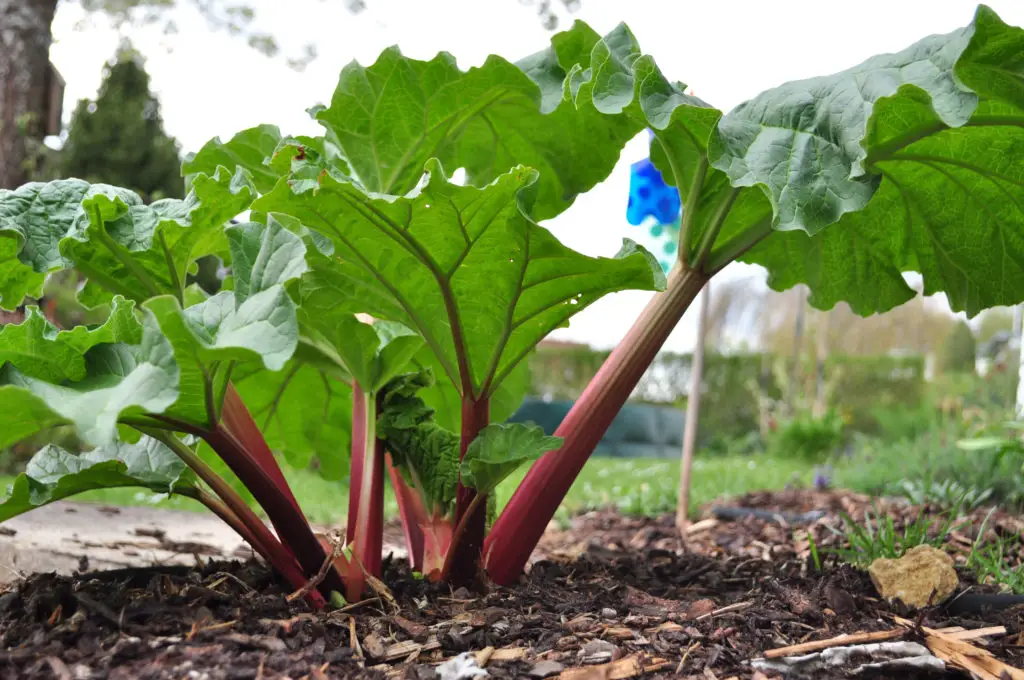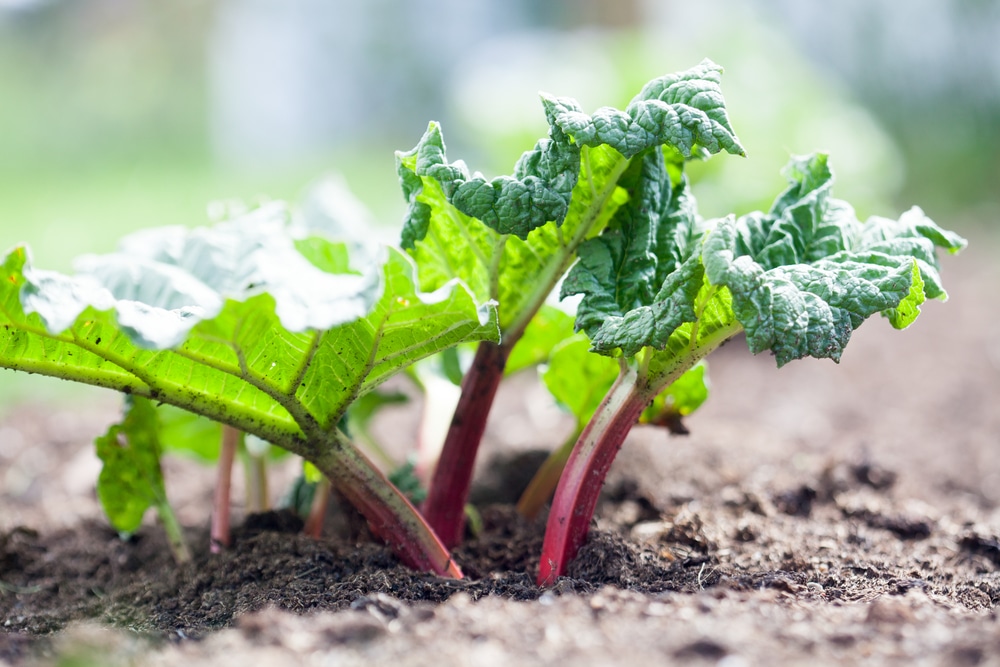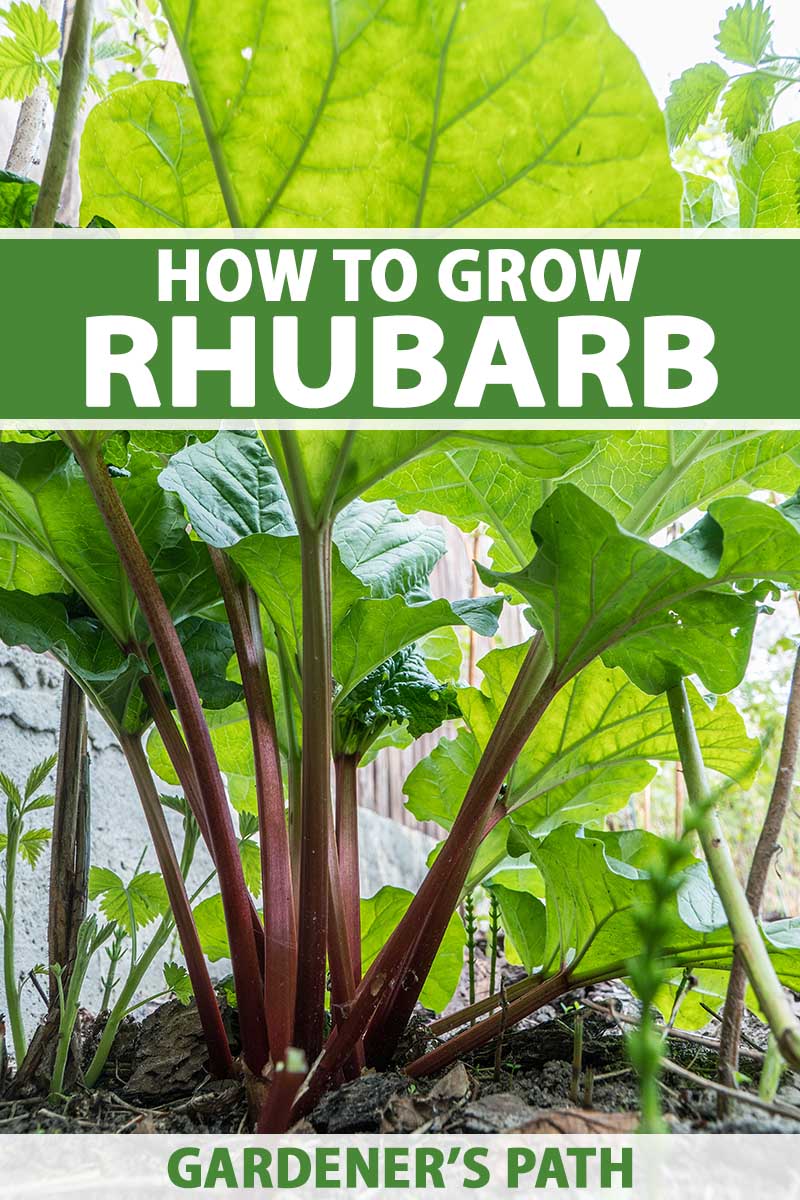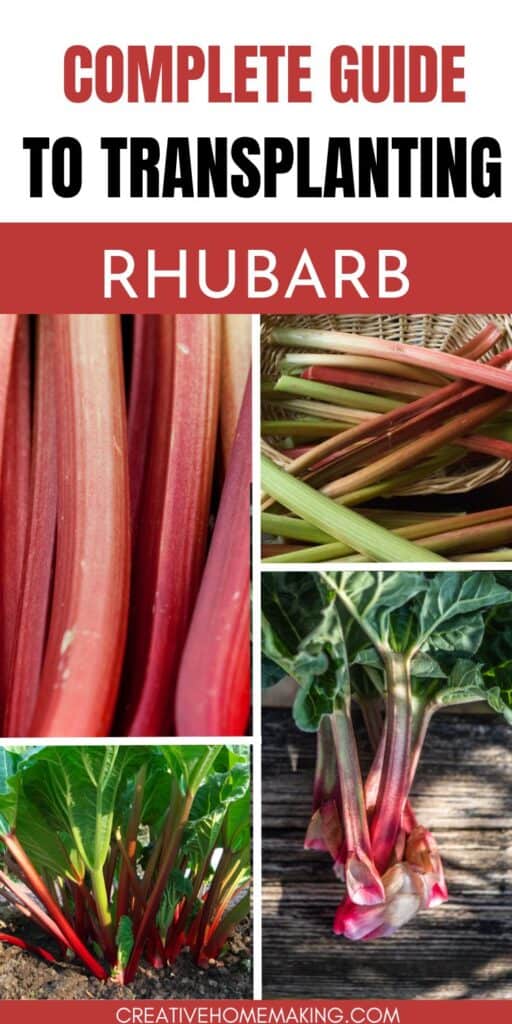Why Transplant Rhubarb: Understanding the Benefits and Timing
Rhubarb plants, known for their tart stalks and versatility in cooking, often require transplantation to maintain their health and productivity. Transplanting a rhubarb plant can be a daunting task, but understanding the reasons behind it and the best time to do so can make all the difference. So, how do you transplant a rhubarb plant, and why is it necessary?
One of the primary reasons for transplanting rhubarb is overcrowding. As the plant grows, its roots can become congested, leading to reduced stalk production and increased susceptibility to pests and diseases. Transplanting the rhubarb plant to a new location with more space can help to alleviate these issues and promote healthy growth.
Soil degradation is another common reason for transplanting rhubarb. Over time, the soil can become depleted of essential nutrients, leading to poor plant performance. Transplanting the rhubarb plant to a new location with fresh, nutrient-rich soil can help to revitalize the plant and promote healthy growth.
Pest and disease issues can also necessitate transplantation. If the rhubarb plant is infested with pests or diseases, transplanting it to a new location can help to eliminate the problem and prevent its spread. It’s essential to inspect the plant carefully before transplanting and take steps to prevent the spread of pests and diseases.
So, when is the best time to transplant a rhubarb plant? The ideal time for transplantation is during the plant’s dormant season, typically in early spring or late fall. Transplanting during this time helps to minimize stress on the plant and reduces the risk of transplant shock. It’s also essential to choose a location with the right climate and soil conditions to ensure the plant thrives.
In conclusion, transplanting a rhubarb plant is a necessary process to maintain its health and productivity. By understanding the reasons behind transplantation and the best time to do so, gardeners can help to ensure the success of their rhubarb plants. Whether you’re a seasoned gardener or just starting out, learning how to transplant a rhubarb plant is an essential skill to master.
Preparing for Transplantation: Choosing the Right Location and Soil
When it comes to transplanting a rhubarb plant, choosing the right location and soil is crucial for its success. Rhubarb plants require specific conditions to thrive, and selecting a location that meets these needs is essential. So, how do you transplant a rhubarb plant to a new location, and what are the ideal conditions for its growth?
One of the most critical factors to consider when selecting a location for your rhubarb plant is sunlight. Rhubarb plants require full sun to partial shade, so choose a location that receives at least six hours of direct sunlight per day. Additionally, ensure that the location is well-ventilated to prevent fungal diseases that thrive in humid environments.
Soil conditions are also vital for the success of your rhubarb plant. Rhubarb plants prefer well-draining, fertile soil that is rich in organic matter. Test the soil pH and adjust it if necessary, as rhubarb plants prefer a slightly acidic to neutral soil pH (around 6.0-7.0). Add organic matter such as compost or manure to improve soil fertility and structure.
When preparing the new location, remove any debris, rocks, or weeds that may compete with the rhubarb plant for water and nutrients. Till the soil to a depth of about 12 inches to loosen and aerate it. If necessary, add a 2-inch layer of compost or well-rotted manure to improve soil fertility and structure.
Another essential factor to consider is watering. Rhubarb plants require consistent moisture, especially during the first year after transplantation. Water the plant regularly, but avoid overwatering, which can lead to root rot and other problems.
Finally, consider the spacing of your rhubarb plant. Rhubarb plants can grow quite large, so ensure that the new location provides enough space for the plant to mature. A general rule of thumb is to plant rhubarb crowns 3-4 feet apart, depending on the variety.
By carefully selecting the right location and soil for your rhubarb plant, you can ensure its success and enjoy a bountiful harvest for years to come. Remember to follow the steps outlined in this article to transplant your rhubarb plant successfully and provide it with the best possible start in its new location.
How to Dig and Handle Rhubarb Roots: A Delicate Process
Digging up rhubarb roots requires care and attention to detail to avoid damaging the plant. When learning how to transplant a rhubarb plant, it’s essential to understand the process of digging up the roots and handling them during transportation. This step is crucial in ensuring the plant’s survival and successful transplantation.
To begin, water the rhubarb plant thoroughly the day before digging to make the soil easier to work with. On the day of digging, use a garden fork to carefully loosen the soil around the plant, working your way around the perimeter of the rhubarb crown. Be careful not to damage the roots or disturb the surrounding soil.
Once the soil is loosened, use a shovel or garden fork to gently lift the rhubarb plant out of the ground. Take care not to pull or jerk the plant, as this can cause damage to the roots. If the plant is particularly large or stubborn, you may need to use a combination of tools to carefully pry it out of the ground.
Once the plant is removed from the ground, inspect the roots for any signs of pests or diseases. Check for any soft or rotting areas, and trim back any damaged or diseased roots to prevent the spread of disease. Use a sharp, clean knife or pruning tool to make clean cuts, and apply a fungicide if necessary to prevent infection.
Next, trim back any old or dead stalks to within an inch or two of the crown. This will help to reduce transpiration and prevent the plant from drying out during transportation. Use a sharp, clean knife or pruning tool to make clean cuts, and remove any weak or damaged stalks.
When handling the rhubarb roots during transportation, it’s essential to keep them moist and protected from damage. Wrap the roots in a damp cloth or paper towel, and place them in a plastic bag or container to keep them humid. Avoid exposing the roots to direct sunlight or extreme temperatures, and keep them away from drafts or wind.
By following these steps and taking care to handle the rhubarb roots with care, you can ensure a successful transplantation and give your rhubarb plant the best possible start in its new location. Remember to keep the roots moist and protected during transportation, and to plant them as soon as possible to minimize stress on the plant.
Transplanting Rhubarb: A Step-by-Step Process
Transplanting rhubarb requires careful attention to detail to ensure a successful relocation. When learning how to transplant a rhubarb plant, it’s essential to follow a step-by-step process to minimize root disturbance and promote healthy growth. Here’s a detailed guide on how to transplant rhubarb:
Step 1: Prepare the Planting Site
Before transplanting the rhubarb plant, prepare the new planting site by loosening the soil to a depth of about 12 inches. Add a 2-inch layer of compost or well-rotted manure to improve soil fertility and structure. Mix the compost or manure into the soil, taking care not to compact the soil.
Step 2: Plant the Rhubarb Crown
Place the rhubarb crown in the center of the planting site, making sure the crown is level with the soil surface. Spread the roots out evenly, taking care not to bend or fold the roots. Fill in the soil around the roots, gently firming the soil as you go to prevent air pockets.
Step 3: Water the Plant
Water the rhubarb plant thoroughly after transplanting, making sure the soil is moist but not waterlogged. Keep the soil consistently moist during the first few weeks after transplanting, reducing watering as the plant becomes established.
Step 4: Mulch the Plant
Mulch around the rhubarb plant to retain moisture, suppress weeds, and regulate soil temperature. Use a 2-inch layer of organic mulch such as straw or wood chips, keeping the mulch a few inches away from the crown.
Step 5: Monitor and Maintain
Monitor the rhubarb plant after transplanting, keeping an eye out for signs of stress or disease. Maintain the plant’s watering and fertilization needs, and divide the plant every 5-7 years to promote healthy growth and prevent overcrowding.
By following these steps and taking care to handle the rhubarb plant gently, you can ensure a successful transplantation and enjoy a bountiful harvest for years to come. Remember to keep the soil consistently moist during the first few weeks after transplanting, and to monitor the plant’s needs to prevent stress and disease.
Post-Transplant Care: Tips for Establishing a Healthy Rhubarb Plant
After transplanting a rhubarb plant, it’s essential to provide proper care to ensure a healthy and thriving plant. When learning how to transplant a rhubarb plant, it’s crucial to understand the importance of post-transplant care in establishing a strong and productive plant.
Watering is critical after transplanting, as the plant needs consistent moisture to establish a strong root system. Water the plant thoroughly after transplanting, and keep the soil consistently moist during the first few weeks. Reduce watering as the plant becomes established, but ensure the soil remains moist during periods of drought.
Fertilizing is also essential for promoting healthy growth and productivity. Apply a balanced fertilizer in the spring, following the manufacturer’s instructions. Avoid over-fertilizing, as this can damage the plant and lead to reduced yields.
Mulching is another important aspect of post-transplant care. Mulch around the plant to retain moisture, suppress weeds, and regulate soil temperature. Use a 2-inch layer of organic mulch such as straw or wood chips, keeping the mulch a few inches away from the crown.
Monitoring for pests and diseases is also crucial after transplanting. Keep an eye out for signs of stress or disease, and take action promptly if you notice any issues. Common pests and diseases that affect rhubarb include aphids, slugs, and powdery mildew.
Finally, it’s essential to provide support for the plant as it grows. Rhubarb plants can grow quite large, so provide a stake or trellis to support the plant and keep it upright. This will also help to promote healthy growth and prevent the plant from becoming leggy.
By following these tips and providing proper care after transplanting, you can ensure a healthy and thriving rhubarb plant. Remember to keep the soil consistently moist, fertilize regularly, and monitor for pests and diseases to promote a strong and productive plant.
Common Mistakes to Avoid When Transplanting Rhubarb
When transplanting rhubarb, it’s essential to avoid common mistakes that can lead to reduced yields, poor plant health, or even plant death. By understanding these mistakes and taking steps to avoid them, you can ensure a successful transplantation and enjoy a bountiful harvest.
One of the most common mistakes people make when transplanting rhubarb is transplanting during the wrong season. Rhubarb plants are typically transplanted in the early spring or late fall, when the weather is cooler and the plant is dormant. Transplanting during the summer or winter can lead to stress on the plant and reduced yields.
Another common mistake is not preparing the soil properly. Rhubarb plants require well-draining, fertile soil that is rich in organic matter. Failing to test the soil pH and adjust it if necessary can lead to poor plant growth and reduced yields.
Handling the roots roughly is another mistake to avoid. Rhubarb roots are delicate and can be easily damaged during transplantation. When digging up the roots, use a fork to gently loosen the soil and avoid damaging the roots. When handling the roots during transportation, keep them moist and protected from damage.
Not providing enough space for the plant is another mistake to avoid. Rhubarb plants can grow quite large, so provide enough space for the plant to mature. A general rule of thumb is to plant rhubarb crowns 3-4 feet apart, depending on the variety.
Finally, not monitoring for pests and diseases is another mistake to avoid. Rhubarb plants are susceptible to pests and diseases, such as aphids, slugs, and powdery mildew. Monitor the plant regularly and take action promptly if you notice any issues.
By avoiding these common mistakes, you can ensure a successful transplantation and enjoy a bountiful harvest. Remember to transplant during the right season, prepare the soil properly, handle the roots gently, provide enough space for the plant, and monitor for pests and diseases.
Rhubarb Transplantation FAQs: Answering Your Burning Questions
Transplanting rhubarb can be a complex process, and many gardeners have questions about how to do it successfully. Here are some frequently asked questions about transplanting rhubarb, along with answers to help you achieve a successful transplantation.
Q: Can I transplant rhubarb in the summer?
A: No, it’s not recommended to transplant rhubarb in the summer. Rhubarb plants are typically transplanted in the early spring or late fall, when the weather is cooler and the plant is dormant. Transplanting in the summer can lead to stress on the plant and reduced yields.
Q: How long does it take for rhubarb to establish after transplanting?
A: Rhubarb plants typically take 1-2 years to establish after transplanting. During this time, the plant will focus on developing its root system and growing new stalks. With proper care and attention, the plant should be ready to harvest within 2-3 years.
Q: Can I transplant rhubarb in the same location where it was previously grown?
A: No, it’s not recommended to transplant rhubarb in the same location where it was previously grown. Rhubarb plants can be susceptible to soil-borne diseases and pests, and replanting in the same location can lead to reduced yields and plant health. Instead, choose a new location with well-draining soil and full sun.
Q: How often should I water my rhubarb plant after transplanting?
A: Rhubarb plants require consistent moisture, especially after transplanting. Water the plant regularly, but avoid overwatering, which can lead to root rot and other problems. Check the soil daily and water only when the top inch of soil feels dry to the touch.
Q: Can I fertilize my rhubarb plant after transplanting?
A: Yes, you can fertilize your rhubarb plant after transplanting. Use a balanced fertilizer and follow the manufacturer’s instructions. Avoid overfertilizing, which can damage the plant and lead to reduced yields.
By answering these frequently asked questions, you can gain a better understanding of how to transplant rhubarb successfully and achieve a bountiful harvest.
Conclusion: Successful Rhubarb Transplantation for a Bountiful Harvest
Transplanting rhubarb can be a complex process, but with careful planning, proper technique, and post-transplant care, you can achieve a successful transplantation and enjoy a bountiful harvest. By following the steps outlined in this article, you can ensure a healthy and thriving rhubarb plant that will provide you with delicious stalks for years to come.
Remember to choose the right location and soil for your rhubarb plant, and to prepare the soil properly before transplanting. Handle the roots with care during transportation, and plant them at the correct depth and spacing. Water and fertilize your rhubarb plant regularly, and mulch around the base to retain moisture and suppress weeds.
By avoiding common mistakes such as transplanting during the wrong season, not preparing the soil properly, or handling the roots roughly, you can ensure a successful transplantation and avoid common post-transplant issues. Monitor your rhubarb plant regularly for pests and diseases, and take action promptly if you notice any issues.
With proper care and attention, your rhubarb plant will thrive and provide you with a bountiful harvest for years to come. Whether you’re a seasoned gardener or just starting out, transplanting rhubarb can be a rewarding experience that will provide you with delicious and nutritious produce for years to come.
So, how do you transplant a rhubarb plant? By following the steps outlined in this article, you can ensure a successful transplantation and enjoy a bountiful harvest. Remember to plan carefully, handle the roots with care, and provide proper post-transplant care to ensure a healthy and thriving rhubarb plant.







